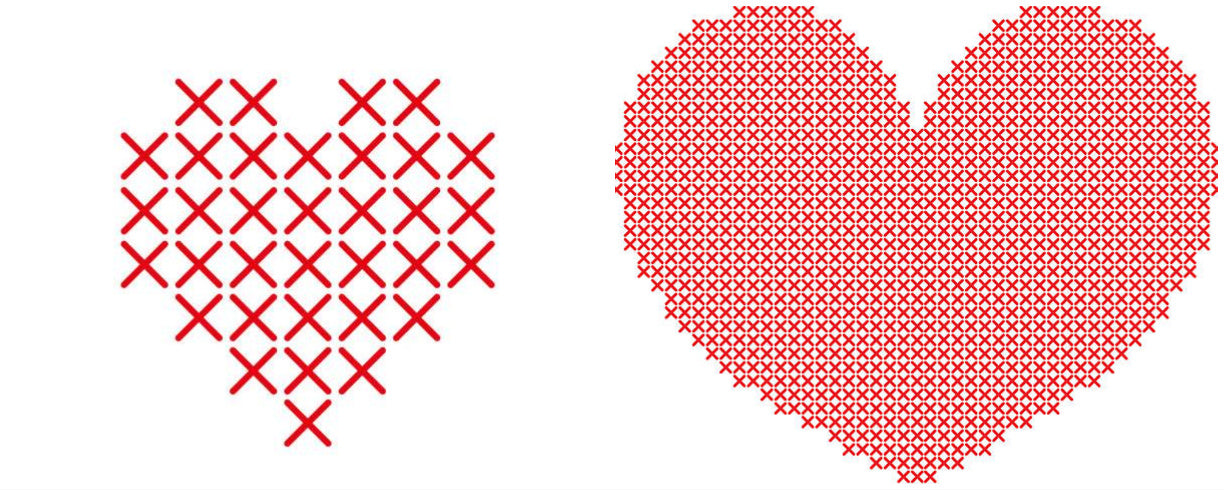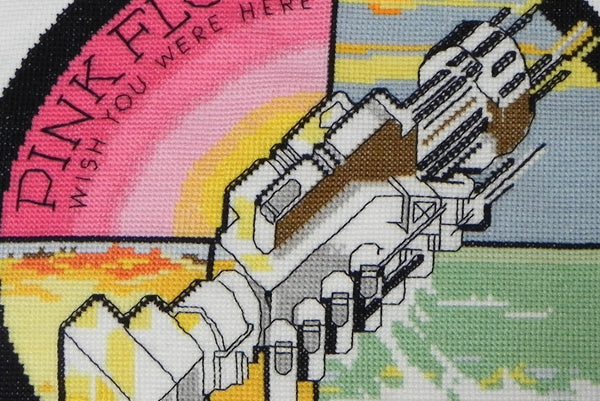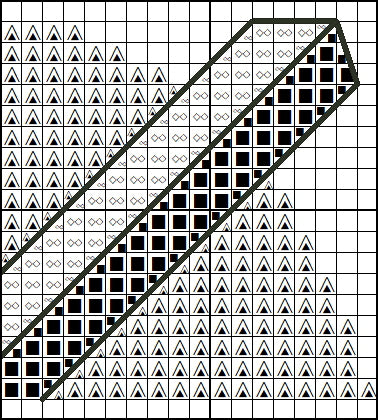Backstitching: love it or hate it, this post is NOT about how or why to do it, but how to make sure the surrounding stitches look as clean as possible. When you have a diagonal backstitch line, and you’re anything like me, you want neither empty white space next to the line, nor full stitches that hang over the line. How do you fill in the space next to the line so that it looks...PERFECT? There are a couple of options, but before we get to any of them, here is the most critical thing you will learn in this post: if you haven't figured it out already, the name of this post - "Strange as Angles" - is a nod to Just Like Heaven by The Cure, so throw it on in the background, and let's talk geometry.
As I've mentioned before, cross stitch is really just analog pixel art. A smaller design is akin to lower resolution – i.e. fewer pixels/stitches per inch – and therefore it looks blockier.

Cross my heart...like, a lot.
In a traditional cross stitch, the outline follows only vertical and horizontal edges. That might be the look you’re going for, but for me, it looks too much like grandma’s vintage cross stitch sampler (™).

If your grandma was into metal! \m/
An angled backstitch line can smooth that out a bit, but it isn't perfect. There will be empty space inside the border, or the stitches will hang over the line. Often this approach is favored by designers as it makes for an easier project to stitch. I’m not knocking it at all. It’s just that I’m neurotic precise about the finished look of my designs. Take a close look at my Pink Floyd – Wish You Were Here album cover. This was one of my first designs and is still one of my biggest sellers.

All along the top of the robot handshake you can see backstitching that connects the whole stitches at their corners but leaves plenty of white space inside. The go-to solution is to add in quarter stitches to take up some of that empty white space. You can see the effect along the bottom fingers above, but I didn’t want to make that top line feel too heavy, so I left it as is. Since this is just a line in the design, it works, but in my Dead Kennedys pattern, I wanted to totally fill in the space.
 |
 |
Cross Stitch Über Alles
These examples happen to contain perfect 45-degree angles, so the backstitch travels up one stitch for every stitch it travels over. This 1:1 ratio means the stitches line up on an exact diagonal - perfect for quarter stitches. Once the degree of an angle changes, assuming you are sticking with whole stitches, you are faced with even more white space inside the line, or stitches that hang over the edge.

Sloppy stitches scare stitchers seeking solid schemes
Here some of the additional stitches aren’t just quarter stitches, but half or even three-quarter stitches. This is the bottom of the “W” in the word lowrider.

|
 |
I can plot out those long, non-standard ratios in my design software all I want, but there is no substitute for stitching on fabric. To figure out where the extra stitches go, I first backstitch the straight line, and then stitch along it making adjustments to the chart as I go. To do this, I will usually work off a paper chart which ends up c-o-v-e-r-e-d with notes and changes which I then touch up in the software. I did take some time to make a reference chart so I don’t have to calculate stitches for some for the more common dimensions. This shows both full stitches and quarter stitches to suit either preference.

Angles we have stitched on high
Some people really dislike backstitching, but it can add a rich dimension to some pieces. I have to credit designer Teresa Wentzler for helping me lose my fear of backstitches and fractional stitches. The images below show part of a design of hers called Tradewinds where you can see the backstitching before and after. Note all the tiny quarter stitches. They were tricky to count, but perfectly illustrate how the finished piece can look so much fuller and more detailed.

A compass rose by any other name...
The eagle-eyed among you may have noticed that both Lowrider and Tradewinds were stitched on linen, on which it is much easier to work fractional stitches. Rest assured though; quarter stitches *can* be worked on Aida – more on that in a future post.
(P.S. The Ozzy Osbourne ornament pictured above is not mine, but you can find it here.)



